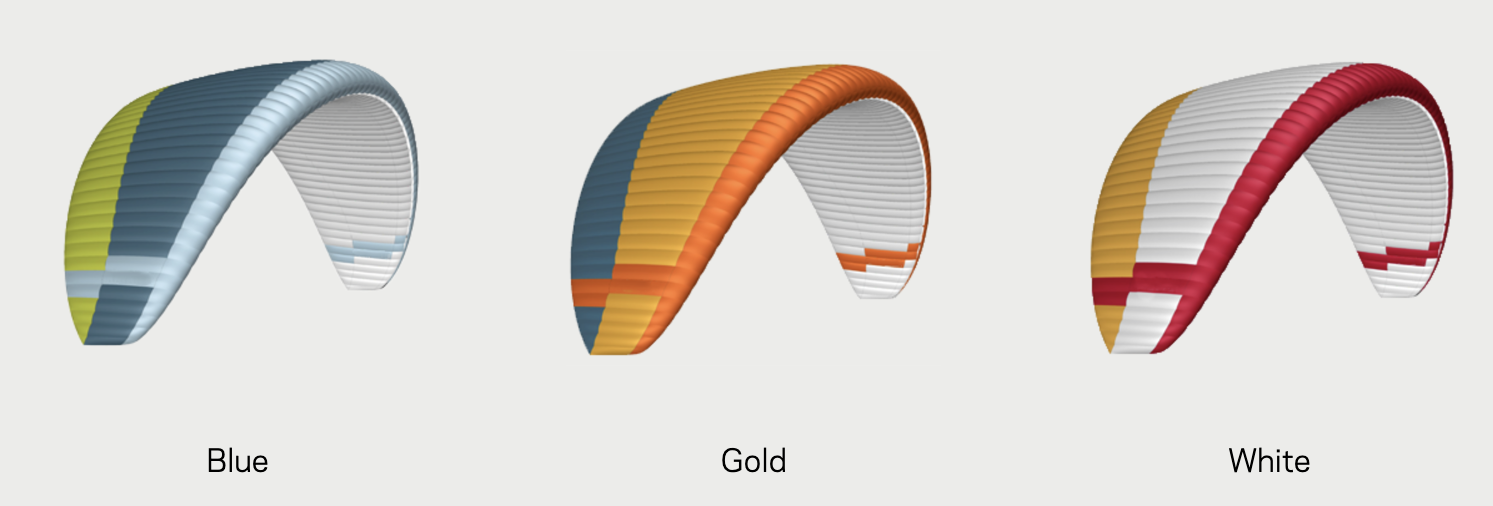No products in the cart.
Nova CODEX Wing EN-C 2-Liner Accessible two-liner performance paraglider
The EN C cross-country paraglider CODEX is a well-balanced, semi-light two-liner. It impresses with high performance, which is very easy to utilise due to the low aspect ratio of 6.1 (flat).
Technical data
| Size | XS | S | M | L | |
|---|---|---|---|---|---|
| Number of cells | 65 | ||||
| Projected span | m | 9.32 | 9.81 | 10.11 | 10.49 |
| Projected area | m² | 18.77 | 20.37 | 22.08 | 23.78 |
| Projected aspect ratio | 4.72 | ||||
| Flat span | m | 11.61 | 12.22 | 12.59 | 13.07 |
| Flat area | m² | 21.45 | 23.78 | 25.21 | 27.15 |
| Flat aspect ratio | 6.10 | ||||
| Distance pilot – canopy | m | 7.66 | 7.72 | 7.89 | 8.19 |
| Total line length | m | 185.84 | 196.55 | 202.87 | 211.00 |
| Weight | kg | 4.20 | 4.40 | 4.70 | 5.00 |
| Certified take off weight | kg | 70-95 | 80-105 | 90-115 | 100-130 |
| Recommended take off weight | kg | 80-90 | 90-100 | 100-110 | 110-125 |
| Certification | EN C/LTF D | ||||
Size XXS is currently under development. We will only launch this size on the market if we can certify the wing without compromising on performance, handling and safety.
Take off weight

Colours
Standard colours: Blue, Gold, White.

Performance meets confidence.
The CODEX is a new innovation in the EN C class that incorporates the valued features of our EN D two-liner XENON. In terms of glide performance and top speed, it sits right at the top of its class. At the same time, with a moderate aspect ratio of 6.1, the CODEX is an EN C cross-country glider with a feel-good factor. Along the entire speed range, it glides very efficiently and is resistant to collapses. This is why the full performance potential can be utilised even during epic days in active air. The idea is flying really far in a relaxed way!
The uncomplicated companion.
During the development of the CODEX, the requirement was not only high performance that could be used in reality, but also practical handling. From simple launch behaviour to easy packing. Nitinol rods at the leading edge are less susceptible to kinking and so the wing can be packed smaller. The CODEX is supplied with the Concertina Bag Light as standard, but you can also use a normal packsack. Due to its semi-light construction, at 4.2 kg in size XS (70-95 kg take-off weight), the CODEX is both robust and suitable for hike & fly.
Efficient right down to the risers.
Intelligent Lightweight

Target group

Quote from…

Quote from…

Materials
| Leading edge: | Dominico 30D, 41 g/m² |
|---|---|
| Top surface: | Skytex 27 C2, 29g/m² |
| Lower surface: | Skytex 27 C2, 29g/m² |
| Profile ribs (suspended): | Porcher Skytex 32 Hard, 32 g/m2 |
| Profile ribs (unsuspended): | Porcher Skytex 27 Hard, 27g/m2 |
| Main lines: | Liros PPSLS 200 / Edelrid U-8001 |
| Gallery lines: | Edelrid U-8000 / Liros DC40 |
| Brake lines: | Edelrid 7850-240 / Liros DSL70 / DC40 |
| Risers: | Kevlar 12 mm |
FAQ
With what take-off weight should I fly the CODEX?
In order to exploit its full XC potential, Nova have defined a recommended take off weight for each size. For high agility with very good climb performance, Nova team pilots prefer to fly the CODEX at the upper limit of the recommended weight range (e.g. approx. 100 kg for size S with a recommended weight range of 90-100 kg).
How do I adjust the height of the handles?
The height of the carbon handles on the risers can be adjusted to several levels. This allows ergonomic adjustment to upper arm length and harness geometry. To do this, remove both caps from the carbon tube, loosen the screw connection with a hexagonal nut, position the HAB-Handle at the desired height, close the screw connection and replace the caps.
What is the difference to the SECTOR?
The CODEX is a completely new development in the EN C class. It is not a direct successor of the SECTOR, because practically everything is new: a two-liner instead of a three-liner, new profile, much better performance and higher top speed as well as a very stable canopy. Therefore it also got a new name. The EN C certification and the requirements for the pilot have remained the same.
What is B-steering?
B-steering means controlling the wing using the Height-Adjustable B-Handles (HAB Handles). As an alternative to control via the brake lines, pitch and direction control can thus be carried out in accelerated flight without deforming the airfoil in a way that reduces performance.
How does the B3 stall work?
Pull down the B3 lines symmetrically to initiate the B3 stall. If you can’t reach the bottom of the B3 line, you can grab the (black) moveable pulley and pull it down. Keep pulling down until the outer wings bend backwards markedly and the sink rate increases significantly. The CODEX remains stable in this flying state until the B3 line is released again. In all Nova test flights this manoeuvre proved to be simple and forgiving. If applying big ears they recommend accelerating the wing at least 25%.
Can I do an SIV course with the CODEX?
Yes, of course you can do safety training with a two-liner. For induced collapses, however, you need so-called folding lines.
All required certification collapses were initiated using folding lines. At the front of each A-loop there is a loop (at the cell opening) for attaching the folding lines. These represent an additional line level in front of the A-level, so to speak. In flight, these are not under tension. They are only pulled down during the initiation of the collapse (in the same way as the A-risers of “normal” paragliders). These folding lines are necessary to be able to initiate collapses on all two-liners known to us. Especially frontal collapses are difficult to induce via the A-lines, as the glider simply accelerates instead of collapsing. Apart from certification testing and safety training, the folding lines have no use. You can obtain them from NOVA on request, together with installation instructions.
What are the advantages of a two-liner?
A two-liner has the advantage of less line drag. Even more important is the so-called B-steering, which is particularly relevant to accelerated flight. With it, you can very directly change the angle of attack of the paraglider and thus compensate for turbulence. Ultimately, this enables faster flying through turbulent air than would be possible with a three-liner.
Nova service info
Read Nova service info here.
Nova product registration
Register your Nova product here.











Reviews
There are no reviews yet.